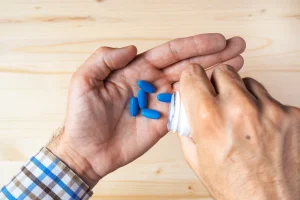
Treatment can vary depending on the severity of your addiction but typically includes a combination of detox, inpatient care, support groups and sober living aftercare. Treatment for rhinophyma can vary depending on the severity of the condition. In mild cases, topical treatments may be sufficient to improve the appearance of the nose. However, more severe cases may require surgery to remove excess tissue.

Why Do Alcoholics Have Red Noses?
Yet chronic alcohol abuse can worsen the condition (rosacea), which leads to drinker’s nose when left untreated. Several factors contribute to the possibility of someone developing AUD, and these include family history, starting to drink early, and a variety of mental health conditions. Those conditions include attention-deficit hyperactivity disorder, post-traumatic stress disorder, and depressive disorder among others. Rosacea affects the nose more in men and the cheeks more in women, which makes men much more likely to get rhinophyma than women. Rhinophyma has not been shown to be connected to alcohol use, and calling rhinophyma an “alcoholic nose” is not medically correct.
Treatment Specialties
All of the information on this page has been reviewed and verified by a certified addiction professional. Intensive sober living adds to patients practicing sober behaviors until they become habits. Restricting substances from the premises, remove any immediate temptation. When there is more time to focus on the sober journey ahead, the future begins to look that much brighter. In some cases, infections arise due to the entrapment of bacteria in the inflamed skin. If this happens, oral antibiotics—like tetracycline—may be necessary to help manage and eliminate infection.
Alcoholic Nose, Nose Redness, and Rhinophyma

Of course, due to the nature of addiction, this is often easier said than done. To give yourself the best chance of recovering and achieving long-term sobriety, consider seeking professional addiction treatment. To find another treatment program, browse the top-rated addiction treatment facilities in each state by visiting our homepage, or by viewing the SAMHSA Treatment Services Locator. However, these treatment methods have not been effective for reducing swelling or the appearance of bumps on the nose from rhinophyma. The association between alcohol abuse and rosacea can be traumatizing for some people with rosacea. The shoulders and chest are also susceptible to looking more flushed or red after drinking alcohol.

The term “alcoholic nose” has an interesting history and an even more interesting scientific explanation. It is believed that the link between alcoholism and rhinophyma is related to the vasodilatory effects of alcohol on blood vessels in the skin. Alcohol can cause blood vessels to dilate and remain in a state of chronic expansion, leading to inflammation, tissue overgrowth, and the development of rhinophyma. A drinker’s nose is characterized by red, bumpy, or a swollen appearance usually directly on the nose or around the cheeks. In some cases, people can even seem to have a purple nose from alcohol use. A “drinker’s nose” is actually a condition called rhinophyma, a side effect of rosacea.
Don’t let addiction dim your light.
- Not only can this negatively affect your health, but it can also have a devastating effect on your relationships, finances, studies, and work life.
- Heroin addiction is a severe and often misunderstood issue, affecting…
- The condition is understood and treated as a condition that is totally separate from alcohol use disorder.
- As of right now, there is no known cure for rhinophyma or drinker’s nose.
- Before discussing potential treatment options for alcoholic nose, it is important to understand whether or not alcohol itself is truly to blame.
- Remember that it is easier to do this when you have support or professional help.
However, it is not more or less impactful than any other risk factors, such as gender, age, skin tone, and family history. Likewise, not everyone with an alcohol addiction develops rosacea, either. Before discussing potential treatment options for alcoholic nose, it is important to understand whether or not alcohol itself is truly to blame. As it turns out, drinking alcohol (even in excessive amounts) has not been proven drug addiction treatment to directly cause rosacea.
- We offer various treatment options, including inpatient and outpatient programs, and our staff is dedicated to helping each patient achieve lasting sobriety.
- Many times, it can be stubborn and require something stronger, in this case surgery.
- Therefore, even with the danger, controlled alcohol detox that is attended by medical professionals is essential for treating severe AUD.
- Treatment for rhinophyma typically involves a combination of medical and surgical interventions.
Rosacea can affect anybody but it most often affects middle-aged women with lighter skin tones. However, the cartilage in the nose is not very flexible, so it can only grow so much. Looking at the image below as an example will give you an idea of what the appearance of what someone’s nose looks like when referred to as an “Alcohol Nose” or “Drinkers Nose”.

What Is Stilpane Syrup? Uses, Side Effects, & More
For some people, avoiding these things can come as a challenge, especially if they are struggling with an alcohol use disorder. However, this doesn’t mean that recovering from both an alcohol addiction and drinker’s nose is impossible. Instead, there are specific treatment programs meant to help those who need to safely detox, recover, and maintain a new lifestyle after saying goodbye to alcohol. alcoholic nose “Alcoholic nose” is a slang term that is used to describe a red, bumpy, and swollen nose that is thought to be caused by a large amount of drinking. It is believed that this skin condition is only affected by those who have an alcohol use disorder (AUD).
